Candy cane pistol shrimps are beautiful marine creatures that can bring interesting factors into your tank. They have a unique profile and carry some interesting facts. Are they reef-safe? Have they any relation with gobby fish? Are pistol shrimp aggressive? With important care detail, all the answers are in the following.
Content Table
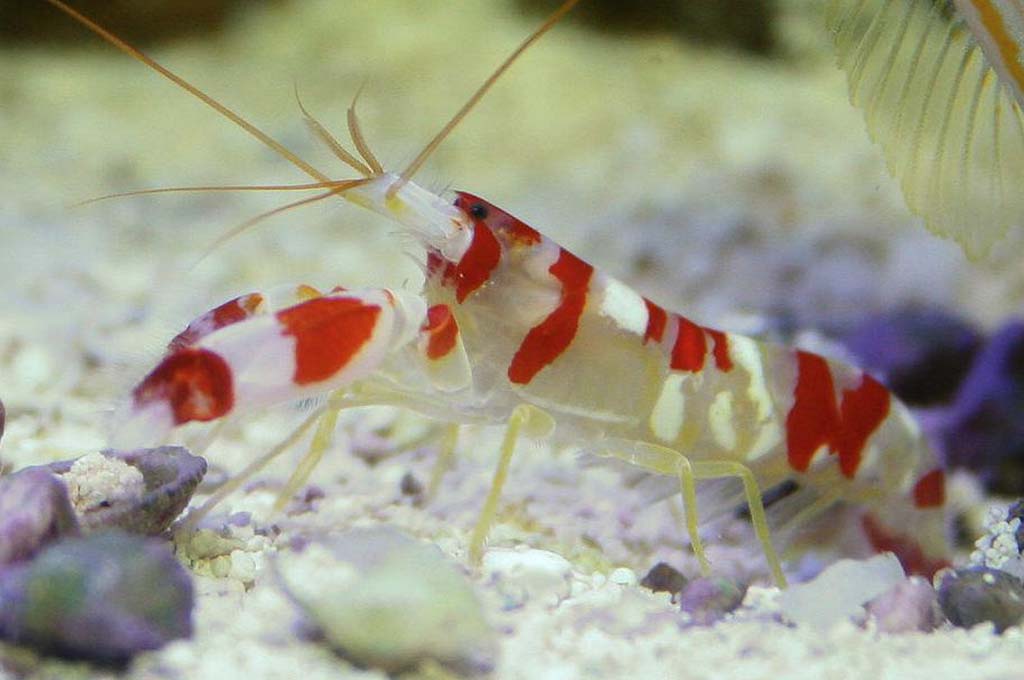
are pistol shrimp aggressive
Pistol Shrimp Profile
As the name suggests, Candy cane pistol shrimp is a gorgeous-looking small shrimp. Snapping shrimp is another common name for this red and white band creature. It creates a loud snapping sound with claws. Here is a brief overview of this unique marine creature.
Species Overview
Pistol shrimps belong to the Alpheidae family. There are 38 genres and 1,119 species of different colors, sizes, shapes, etc. Out of 38, 2 genres, Alpheus and Synalpheus are most common. Alpheus has about 330 species, and Synalpheus carries about 160 species.
Physical Overview
Their size varies among species. Usually, it ranges from 1.2–2.0 inches. Maximally, they can touch 3 inches. They have various vibrant colors, i.e., red, orange, yellow, blue, green, etc. They are attributed to large claws, twice their body length, and use them for hunting by creating cavitation, communication, deterring predators, and attracting mates.
Life span
They can live between 2 and 4 years in the wild and up to 5 years in captivity with optimal conditions.
Distribution and Habitat
Candy cane pistol shrimp are present throughout the world. About 400 species are globally available, 250 specific to the Indo-West Pacific region, and more than half of these 250 species are distributed around the Australian coasts. New species are regularly being discovered throughout the world.
They are mainly tropical and subtropical region species in warm and shallow waters, i.e., usually 30 meters. Here are some of the living habitats of these species.
| Coral reefs | Temperate kelp forests | Salt marshes |
| Seagrass beds | Rocky bottoms | Muddy areas |
| Sponge-dominated habitats | ||
Peculiarities
Pistol shrimps have many peculiarities. Some of them are as follows.
- They have two snapping claws, one shorter than the other. They use them to create cavitation bubbles and snapping sounds. The snapping sound 210 DB louder, louder than a gunshot.
- The bubbles created by cavitation are hotter than lava and move at a high speed, 60 miles per hour.
- They use their snapping claws to stun predators.
- Produce snapping sounds to attract their mate.
- They have a symbiotic relationship with gobbies. Goby fish helps to protect them, and they share their food and shelter.
- Climate change experts use their snapping behavior to detect the habitat’s health, changes in the ecosystem, and restoration.
- They are excellent diggers. They build underground tunnels as their house, and share these tunnels with their symbionts.
- They are omnivores, i.e., eat small fish, algae, and detritus.
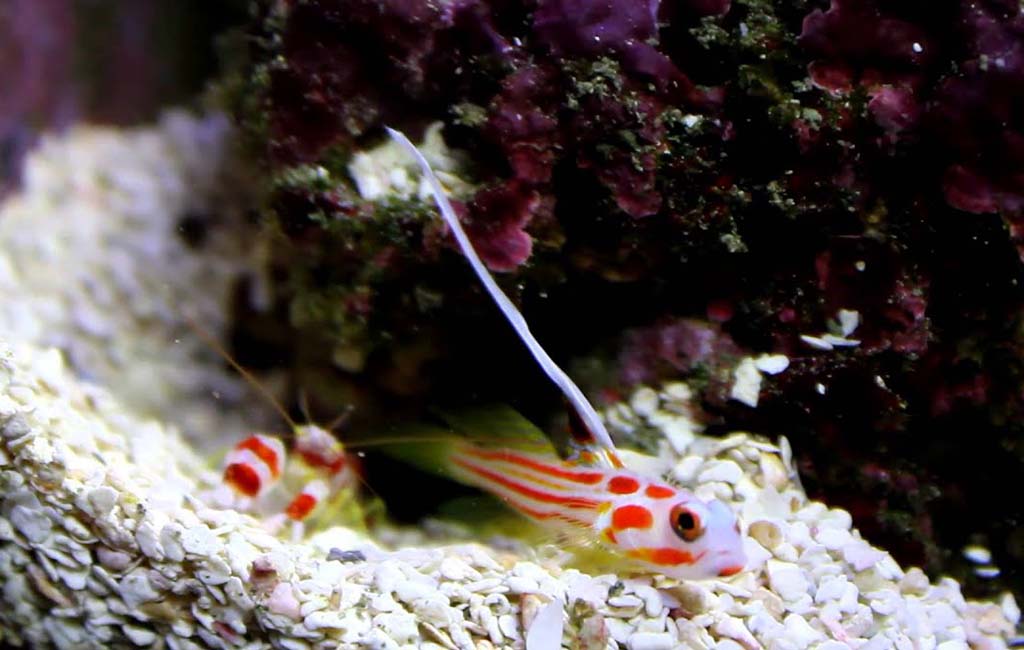
candy cane pistol shrimp
Is Candy Cane Pistol Shrimp Safe for Reef Tank?
Candy cane pistol shrimps are reef-safe and behave like a good tank mate. They don’t hunt for mates until they are very small. Moreover, their powerful snap doesn’t pose any threat to the reef tank’s glass. Here is a brief explanation of different aspects to keep them in the tank.
Reef-Safe
They are scavengers and not a serious threat to the tank ecosystem. They used to create unique tunnels with their snappers in the substrate. However, they can be a little problem for near-substrate delicate corals due to their sand-shifting behavior.
Solo or Community Tank
They go well in both aspects. In solo, you need to establish the tank with thick substrate to satisfy their burrowing habit. Add many hiding places, e.g., rocks, caves, tree trucks, etc., to mimic their natural habitat.
On the other hand, they go well with tank mates. You should add them first so they can establish their territory. Moreover, add size and behavior-compatible tank mates, i.e., peaceful fish that are not bottom dwellers.
Gobby fish are the most suitable ones, i.e., gobby fish. It acts like a watchman for the shrimps, and Candy Cane shrimp shares food and shelter with Gobby. Neon gobies, pygmy gobies, neon cardinalfish, Small snails, hermit crabs, and other non-predatory invertebrates are a few more suitable tank mates for them.
Are They Aggressive?
They are peaceful when they are kept with other peaceful fish, especially with Gobby fish. They are a bit territorial at the beginning when they are building their tunnels. Moreover, their aggression is also visible when their tank mates are small and slow fish. Otherwise, you will always watch them silent and busy with their burrow.
Will They Break the Tank Glass or Eat Fish in the Tank?
They produce high heat and bubble cavitation at 60 mph. However, they don’t affect the aquarium glass and other creatures as well until other creatures try to prey on them. Moreover, they don’t eat other fish until the subject is small and slower.
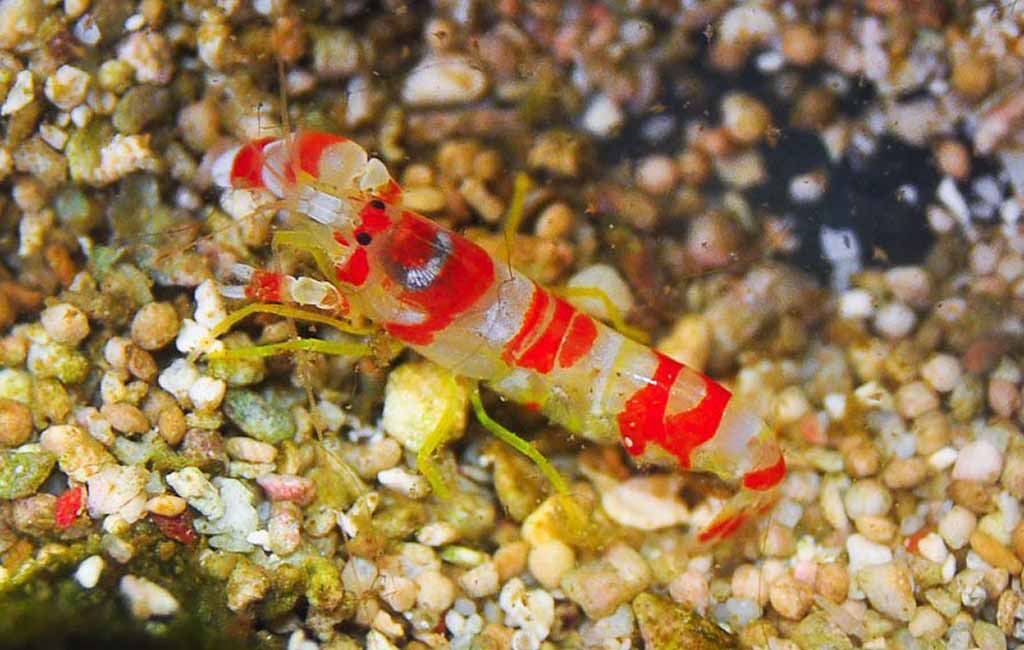
Candy cane pistol shrimps are reef-safe
Candy Cane Pistol Shrimp Facts Sheet
| Aspect | Detail |
| General Facts | |
| Common Names | Candy Cane Pistol Shrimp Randall’s Pistol Shrimp |
| Scientific Name | Alpheus randalli |
| Family | Alpheidae |
| Origin | Mainly in the Indo-Pacific region |
| Reef Safe | Yes |
| Physical Characteristics | |
| Size | 1.5–2 inches |
| Color | Red strips on the white body, with transparent segments, look like candy—yellow or orange-tinted claws. |
| Claw fact | One claw is larger than the other, making a louder sound, i.e., 210 DB. |
| Life span | |
| Life span in the wild | 2–3 years |
| Lifespan in captivity | 3–5 years |
| Habitat | |
| Natural habitat | Corals and sandy sea beds at shallow depths, i.e., up to 30 meters. |
| Minimum tank size | 30 gallons |
| Substrate | 3-inch deep, fine sand, or soft bottom |
| Decors | Live rocks for shelter and burrowers |
| Temperature | 75–80°F |
| Salinity | 1.023–1.025 |
| pH | 8.1–8.4 |
| Food | |
| Diet Class | Omnivore |
| Diet in wild | Small invertebrates Detritus Organic matter |
| Tank Diet | Commercial shrimp pellets Brine shrimp Mysis shrimp Flake food Algae wafers |
| Behavior | |
| Nature | Peaceful, burrower, a bit territorial |
| Snapping Claws | They use their snapping claws to attract their mates and as a defense mechanism. |
| Tank Compatibility | |
| Tank mates | Neon gobies Pygmy gobies Neon Cardinalfish Small snails Hermit crabs Other non-predatory invertebrates |
| Non-suitable tank mates | Very small shrimps Delicate crustaceans Small and slow fish |
Candy Cane Pistol Shrimp Care
Here are some care aspects for candy cane pistol shrimp.
- Please keep them in at least a 30-gallon tank.
- Make a pair with gobby fish.
- Use fine sand with 2 to 3 inches of depth, as they are burrowers.
- Maintain 76-78°F temperature, 8.1-8.4 pH, 1.024-1.026 salinity, and 8-12dKH alkalinity.
- Keep the water ammonia-free and less than 10 ppm nitrates.
- Feed them once or by skipping a day.
- Keep them with peaceful fish.
- Change 20% tank water each week.
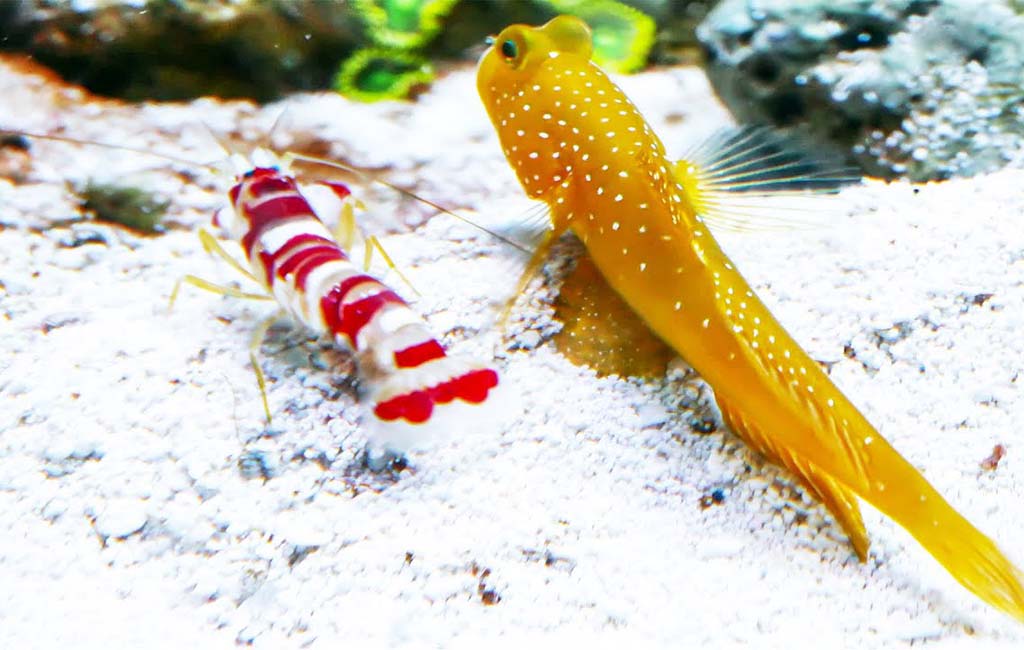
Goby fish and Candy cane pistol shrimp
Closing Remarks
Candy cane pistol shrimps are native to tropical and subtropical regions. However, different species are being discovered throughout the world. These reef-safe fish have a symbiotic relationship with gobby fish. They are peaceful unless their tank mates are small and building their territory. Enjoy this unique shrimp in your tank.

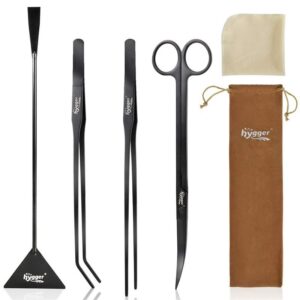
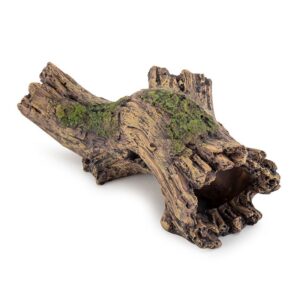
Leave a comment